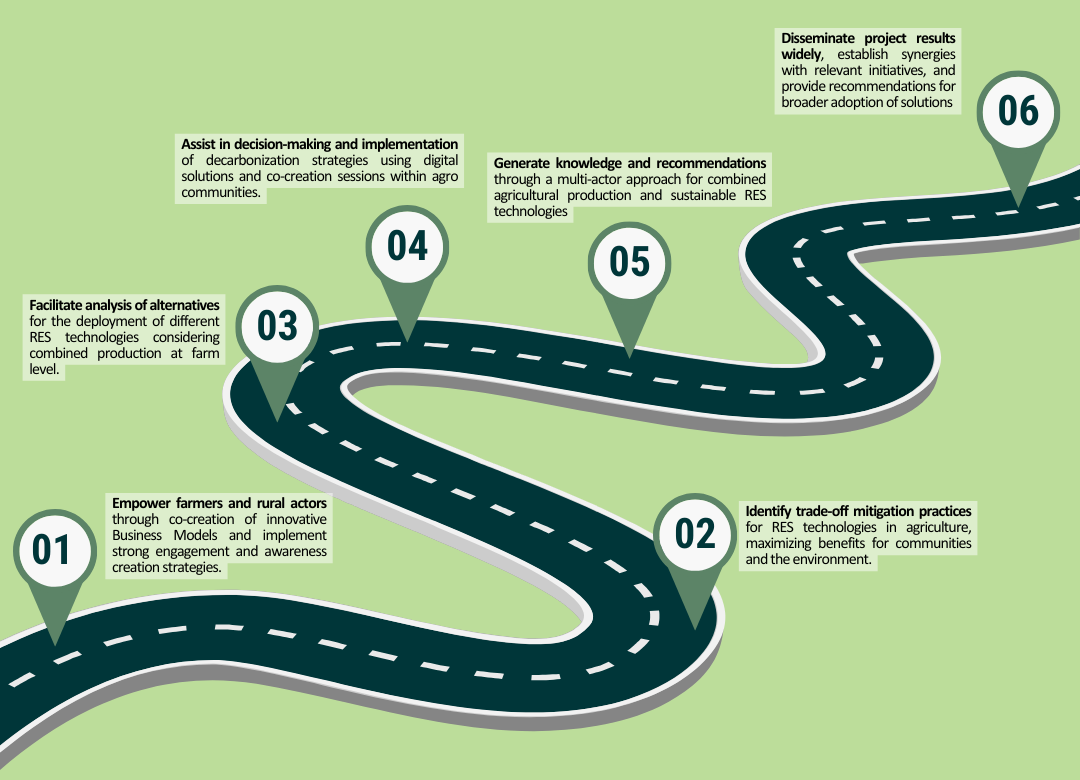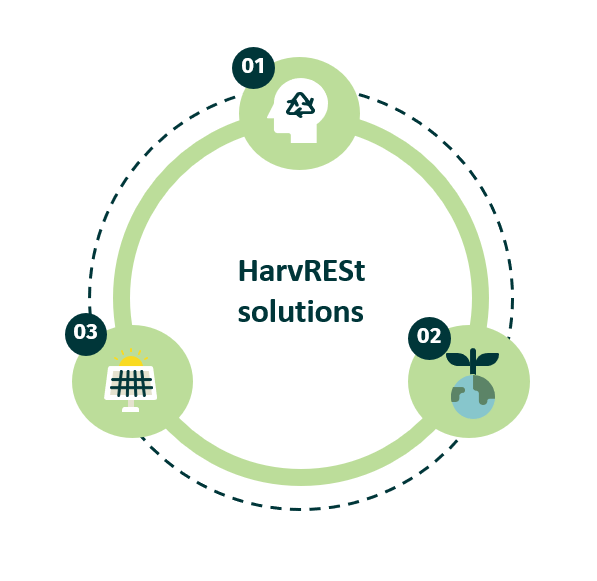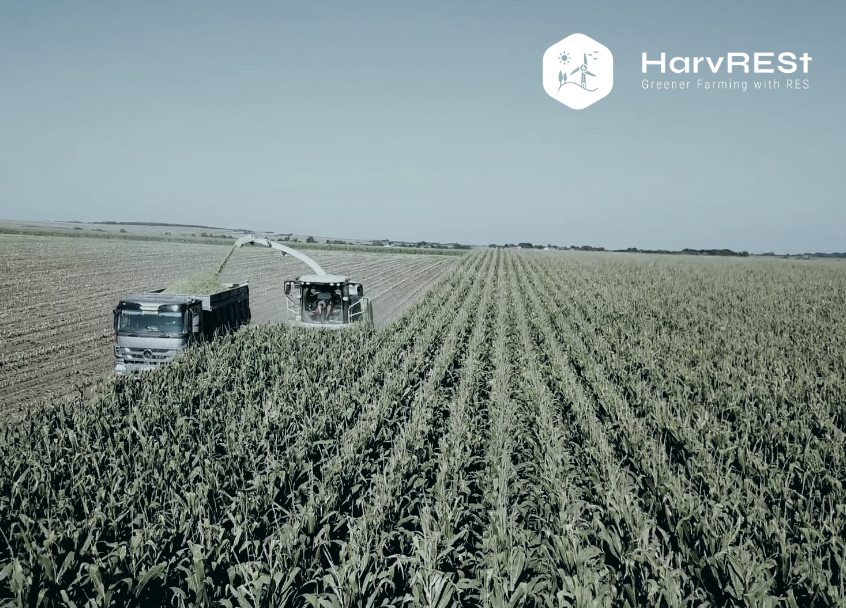WHY HARVREST?
The HarvRESt project has been launched to address the need of enhancing the use of renewable energy technologies (RES) along with sustainable farming methods, aiming to help the agricultural and food industry reduce carbon emissions.
However, deciding how best to integrate green energy on a farm is not without its challenges. The decision is a complex one, with many factors to be taken into account. HarvRESt will therefore work on solutions that alleviate this challenge.
Watch the video to get a short introduction to the HarvRESt project.

OUR MAIN OBJECTIVE
More knowledge for better decisions
The main objective of HarvRESt is to improve the existing knowledge of options for reducing carbon emissions on farms, by maximising synergies between the integration of RES and sustainable agricultural practices. This will result in a decision support system capable of providing ad-hoc recommendations to both farmers and policy makers that will make it possible to achieve improved production rates on renewable energy as well as food & feed, within agricultural communities.
OUR PATH TO ACHIEVING THE OBJECTIVE INVOLVES

OUR APPROACH
Improving environmental impacts while preserving the farmers’ main priority
In order to ensure that the main priority of farmers is preserved, namely the agricultural production rates, while achieving improved environmental impacts and a diversity of incomes for agro communities, i.e. energy exchange and biofuels production, HarvRESt will implement a transdisciplinary and holistic approach based on three main pillars:
- Social engagement and Innovative business models
This includes not only financial issues but also social sciences and organisational considerations - Agricultural and environmental trade-offs
Addressing the impact of RES technologies on agricultural production, potential trade-offs and synergies of the alternatives to be explored - RES sources and smart energy systems
Addresses the modelling and design of the technological alternatives required to support the uptake and upscaling of RES production.

Supporting these pillars, HarvRESt will address the political and regulatory framework to provide recommendations based on the project outcomes, as well as digital aspects, which will be key to support the early stages of planning and design, implement smart systems at farm level and develop the resulting decision support system of HarvRESt.
To gather valuable information, co-create solutions and validate them, HarvRESt will be fed by real data coming from 5 use cases located in Italy, Denmark, Spain and Norway. Moreover, HarvRESt community will involve 200 Agricultural and energy stakeholders and reach more than 1500 Farms in the project.
Results expected to be generated in HarvRESt
- Mitigation measures catalogue
- KPI’s for performance monitoring
- Soil quality methodology
- Biogas planning tool
- Forecasting algorithms
- HavRESt hybrid Models
- HarvRESt smart energy system algorithms
- HarvRESt Agricultural Virtual Power Plant (AVPP)
- HarvRESt Decision Support System (DSS)
- Strategy for multiactor engagement
- Capacity building material
- Business Model catalogue
- Co-creation guidelines
- Knowledge sharing toolkit
Expected impact of HarvRESt
- New evidence and knowledge on the trade-offs and impacts of RES integration at farm level.
- Increased levels of awareness towards the installation of RES and the promotion of goods that are climate neutral.
- Better performing RES assets and farms, benefiting from diversified and enhanced incomes and achieving higher levels of circularity and resources independence.
Duration
years
Budget
million EUR
Partners
across Europe
Countries
in the EU
Facts about HarvRESt
- HarvRESt is an acronym for Harnessing the vast potential of RES for sustainable farming
- Project period: 1 January 2024 to 31 December 2026
- Project Coordinator: CIRCE
- In total, 17 partners from Spain, Norway, Italy, Belgium, Cyprus, Denmark, the Netherlands and France are participating in HarvRESt. See all partners here

